5 Colorful Reasons To Visit The Historic Wineries Of Napa And Sonoma.
Within the beautiful California valleys of Napa and Sonoma are what most consider the greatest concentration of high quality vineyards in the world. While they are only 150 years old, the combination of soil, weather and winemaker’s innovations have brought these wines to the highest level of excellence.
On the SelfTour™ GPS Guided Audio Driving Tour App of this area, visitors are guided to over 50 of 1200 wineries. Many are the biggest names in the wine business. But most fascinating about this technically innovative SelfTour™ Wine Adventure is that those driving it will visit 5 of the most historic and famous wineries. All are still producing excellent wines.
Here are the wineries and the reason to visit each….
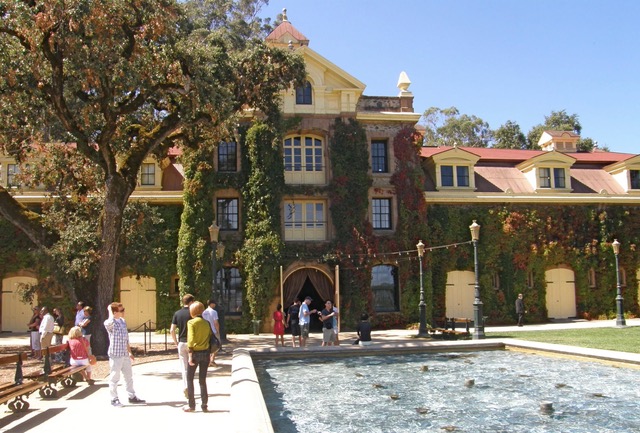
Coppola Inglenook Winery
Number 5 – The Inglenook Winery was founded by a Finnish immigrant Sea Captain named Gustav Neibaum. A graduate of the Nautical Institute in Helsink he became a wealthy fur merchant in San Francisco. He purchased the Inglenook Farm in the Napa valley, which was already growing grapes, and established it as a winery in 1879. In 1881 Neibaum starts building the great chateau which still houses the winery today. It wasn’t until a year later that Neibaum crushes his first vintage of 80,000 gallons of Inglenook wine.
After Neibaum’s death, and a few intermediate owners, in 1975 movie Producer and Director Francis Ford Coppola bought the Inglenook Winery with the proceeds from his first blockbuster movie, The Godfather. He combines his name to the founders making it the Neibaum-Coppola Estate Winery. In 1990 Wine Spectator scores Coppola’s Inglenook Cabernet Sauvignon a perfect 100 points and name it one of the Top Wines of the Century. Inglenook is one of the most impressive vineyards to visit in Napa Valley.
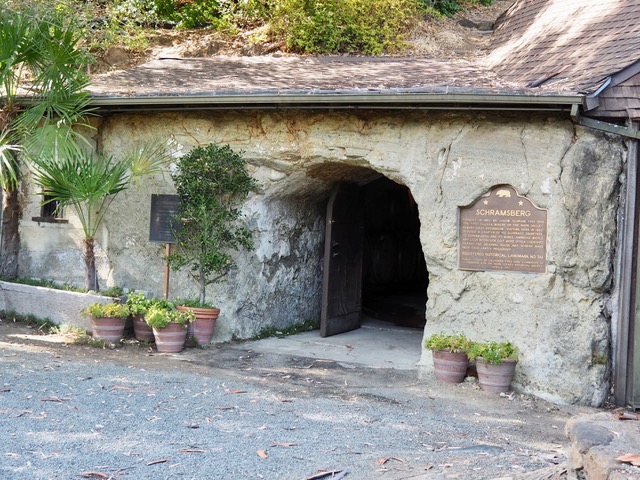
Schramsberg Winery
Number 4 – The famed writer Robert Louis Stevenson was a frequent visitor to the Schramsberg estate in Calistoga. Stevenson befriended Jacob Schram who had emigrated from Germany and founded Schramsberg Vineyards in 1862. After founding his winery, Schram found new employment for the Chinese laborers who had recently finished constructing tunnels for the Union Pacific Transcontinental Railroad. He hired them to dig a network of tunnels into the volcanic hills to age his wines.
Robert Louis Stevenson devoted a chapter to Napa wine in his book Silverado Squatters, an account he wrote of his experience Schram in the Napa Valley. Schramsberg is considered the first producer of premium Napa Valley Champagne.
The Schramsberg winery was brought back from disrepair in 1965 by the Davies family who began producing quality sparkling wine. Their Blanc de Blanc, often served at State Dinners and gatherings in the White House accompanied President Nixon to China in 1972 for his famous “Toast to Peace” with China’s Premiere Zhou Enlai. You can still experience the original Schramberg tunnels as part of your visit to their fascinating Winery.
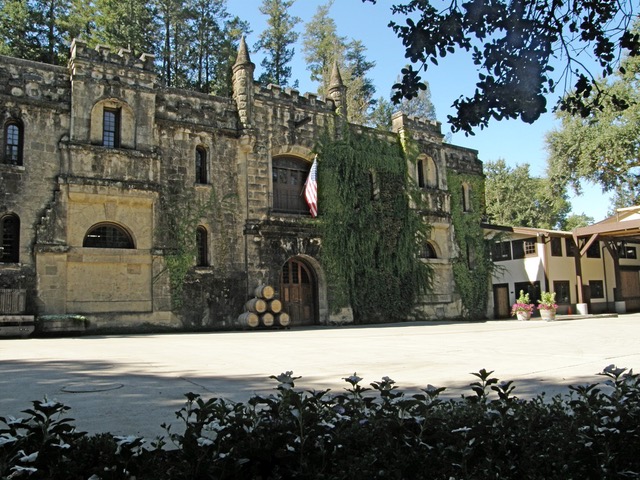
Montelena Vineyard and Winery
Number 3 – California Senator Alfred Tubbs established his Chateau Montelena Winery in 1888. It was the Chardonnay from this winery that established Napa as a world-class wine region. Tubbs modeled his turn-of-the-century winery after a chateau in the Bordeaux region of France. The beautiful Chateau is made of stone with walls three to twelve feet thick to provide natural insulation against outside heat on cold. Some say the design seems to resemble a English Gothic castle more than a French Chateau, with it battlement crenels, narrow arched windows and faux arrow slits.
Located furthest North in the Napa Valley, in the shadow of Mount St. Helena, its volcanic soil is well drained, stony and loose, perfect for growing grapes. It seems fitting then that a wine from Chateau Montelena would astonish French oenophiles in 1976 at a blind tasting in Paris. That’s exactly what happened when, under the Barrett family leadership, this winery’s 1973 Chardonnay topped France’s best offerings. Visitors still come to this gorgeous winery to taste the Napa Valley Chardonnay that stormed the proverbial Bastille of French wine superiority.
A visit to Chateau Montelena is mandatory for any true connoisseur of Napa Valley wine.
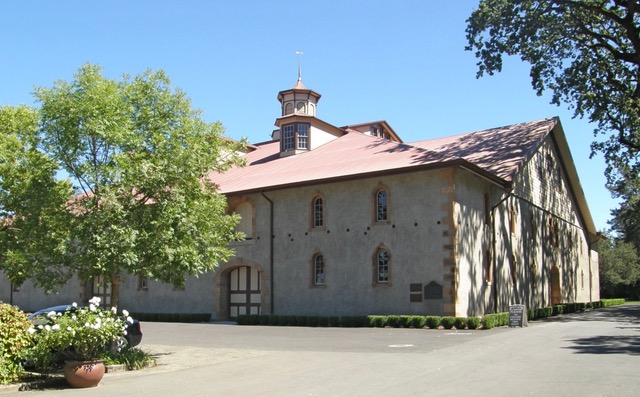
Charles Krug Winery
Number 2 – Charles Krug was indeed a fortunate man. He emigrated from Prussia in 1847 and served as an apprentice to California’s first winemaker, Agoston Haraszthy. Marrying Carolina Bale, a granddaughter of the prominent Vallejo family. Her grandfather, General Mariano Guadalupe Vallejo was in charge of this entire area when it was a territory of Mexico and was charged with keeping the Russians from gaining a foothold in the area. Carolina’s dowry included 540 acres of prime land north of St. Helena in the Napa valley. Haraszthy shared with Krug some of his original rootstocks he brought over from Europe and Kurg utilized his newly acquired land to establish the first commercial winery in Napa and California’s second commercial winery.
As it turned out, his land and climate was much more suited for growing wine grapes than Haraszthy’s and Krug also made innovations to the wine making process that resulted in excellent wines. After Krug’s death in 1892 the winery was sold and went into decline. In 1943, a young Robert Mondavi convinced his parents to purchase the inactive winery for him to begin his winemaking career. The winery is still owned by Robert’s younger brother Peter Mondavi.
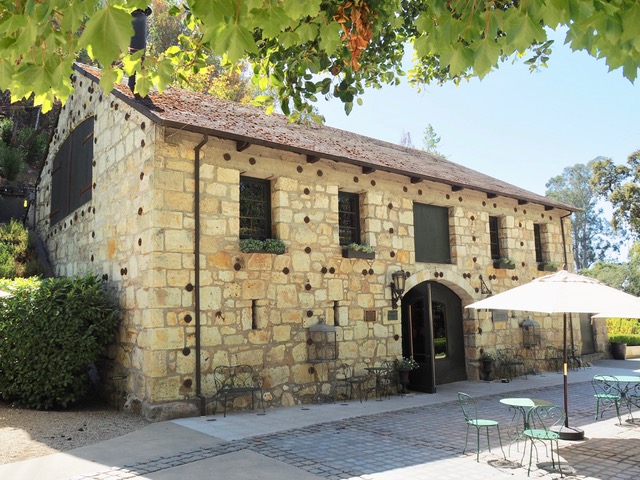
Buena Vista
Number 1 – SelfTour’s Napa & Sonoma Driving Tour App guides you by GPS through the outskirts of Sonoma, to a small, winding, tree covered road that you leads you to California’s first commercial winery, the Buena Vista Winery. Along the way the App’s narration takes you back to the mid 1800s and the story of how a young adventurer, and the first Hungarian to settle permanently in the United States, would become the “Father of Modern Winemaking in California.” This is the story of Count Agoston Haraszthy who followed the forthy-niners in search of gold in the hills of California, but instead found “purple gold” – exceptional wine. Here in 1857 he planted the world’s largest vineyard using cuttings he imported from Europe establishing the Buena Vista Winery. He constructed the first gravity flow system, dug the first wine caves in California for wine aging and storage and created barrels from redwood trees.
Today, in a beautiful place seemingly in the middle of nowhere, the original winery is still here to see and experience. An special spot to sip exceptional wine and absorb viticulture history. Besides being a vintner, Haraszthy was a nobleman, writer, townbuilder, livestock owner, store owner, brick maker, steamboat operator, ferryman, wagon master, livery stable operator, stagecoach operator, state legislator, land speculator, refinery owner, assayer, sugar plantation owner, distiller and adventurer. And it was this last trade that did him in. In 1868, the Count set off for another grand adventure – to establish a rum plantation in Nicaragua. In a fitting end to a man who, by all accounts was larger than life, the Count disappeared in 1869 when he fell from a tree branch while crossing alligator-infested waters.
If you enjoy the history of wine making, these wineries are a “must see.” And the best way to experience them is by using the SelfTour™ Napa & Sonoma App. The App not only leads you to wineries, utilizing GPS, but also activates the narration at the appropriate times along the way. Complete hands-free activation!
Visit our Napa & Sonoma Valley Tour page for more information and to purchase.


